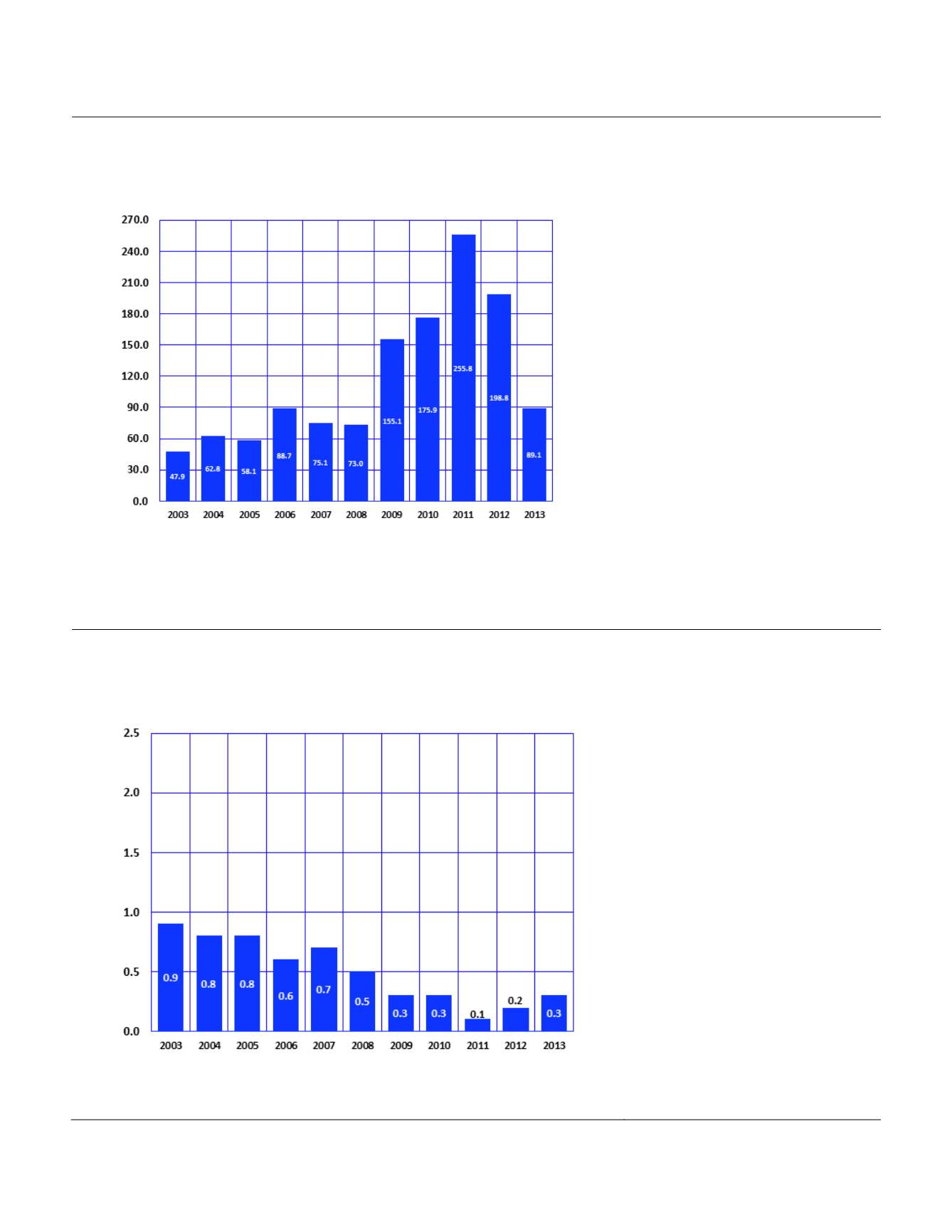
3A. NON-SEXUALLY TRANSMITTEDDISEASES
Figure3A-1
Trends in the IncidenceRates
a
of Valley Fever (Coccidioidomycosis)
byYear, Arizona, 2003-2013
Note:
a
Number of cases per 100,000 population.
Coccidioidomycosis
or
Valley Fever
is
a fungal infection caused by
inhalation of airborne spores that are
present in the soil of southwestern
United States, California, and parts of
Central and South America. Most
infections are asymptomatic or self-
limited in patients with healthy
immune systems. In rare instances,
severe lung disease or disseminated
infection can develop in patients.
Valley Fever
imposed the greatest
burden on morbidity among all non-
sexually
transmitted,
notifiable
diseases in Arizona in 2013. The
reported incidence of Valley Fever
decreased 54.6 percent from 2012 (n
= 12,920) to 2013 (n = 5,861). The
2013 incidence rate of 89.1/100,000
(
Figure 3A-1, Table 5F-2
) was 86.0
percent greater than the incidence
rate of 47.9/100,000 in 2003, but
was 65.2 percent lower than the
incidence rate of 255.8/100,000 in
2011.
Figure3A-2
Trends inCase FatalityRates
a
for Valley Fever (Coccidioidomycosis)
byYear, Arizona, 2003-2013
Note:
a
Number of deaths per 100 reported cases.
Nineteen of the 5,861 Arizonans who
had
Valley Fever
in 2013 died from it
(
Table 3A-2)
for a case fatality rate
of 0.3 deaths per 100 cases (
Figure
3A-2
). The 2013 case mortality rate
for Coccidioidomycosis was 66.6
percent lower in 2013 than in 2003.
208
Arizona Health Status and Vital Statistics 2013


